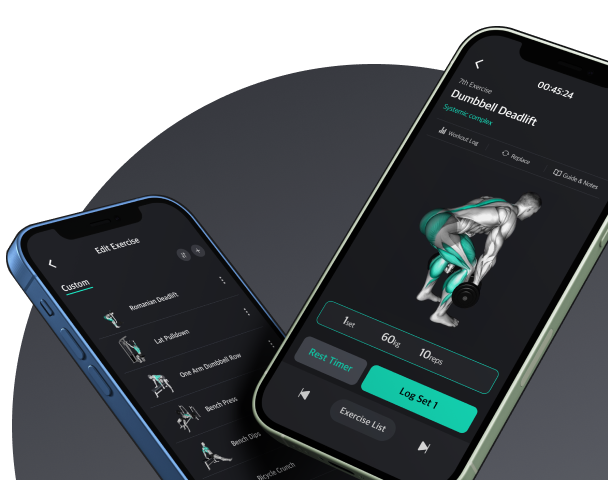Weighted Pull Up vs Prone A Raise
Maximizing Your Back Workout Plan
Feb 22, 2025Contents
Choosing between Weighted Pull Up and Prone A Raise for your back workout plan? Pondering which brings better results or when to slot each into your schedule for the utmost benefit?
Customize Your Back Workout: Explore the Benefits of Weighted Pull Up and Prone A Raise for Better Comparison.
Planfit Users' Choice about Weighted Pull Up vs Prone A Raise : Which is Better?
Based on randomly selected data from 1 million completed workouts, Planfit users seem to prefer Weighted Pull Up with a total of 270 compared to 565 for Prone A Raise
However, this is just a matter of preference for the majority. If you are wondering which of the two exercises to do right away, please read the text below. Compare the pros and cons of each exercise and choose the one that suits you better to proceed with.
How to Weighted Pull Up
Weighted Pull Up muscles worked: Back
Form
- 1. Begin the movement by pulling your body up until your chin is over the bar.
- 2. Focus on using your back muscles to pull your body up, rather than your arms.
- 3. Hold for a moment at the top of the movement, then slowly lower your body back to the start position.
Coach's Comment
- 1. Make sure to keep your core engaged and your body in a straight line throughout the exercise.
- 2. Be careful not to swing or kip your body as you perform the pull-up.
- 3. Start with a light weight and gradually increase the weight as you become more comfortable with the movement.
If you want to know a detailed guide to Weighted Pull Up, alternative exercises, and its benefits, check it out here. Check out the Weighted Pull Up Guide page of our blog!
How to Prone A Raise
Prone A Raise muscles worked: Back
Form
- 1. Push up using your arms and hands, contracting your abdominal muscles and glutes as you raise your torso off the floor.
- 2. Keep your back straight and your neck in line with your spine.
- 3. Hold the contraction for a few seconds before lowering your body slowly back to the starting position.
Coach's Comment
- 1. Make sure to keep your back straight and your neck in line with your spine throughout the exercise.
- 2. Avoid arching your back or straining your neck.
- 3. Don't go too deep into the movement if you feel any pain or discomfort.
If you want to know a detailed guide to Prone A Raise, alternative exercises, and its benefits, check it out here. Check out the Prone A Raise Guide page of our blog!
Get free AI personalized workout plan
Choosing exercises that align with your goals and body type is as important as consistency in your workout regime. Its about smart training that targets your specific fitness aspirations.
To create a routine that incorporates the right exercises for you, explore our [workout generator] It’s a straightforward way to customize a workout plan to meet your unique needs and objectives, ensuring every effort contributes to your fitness journey.

